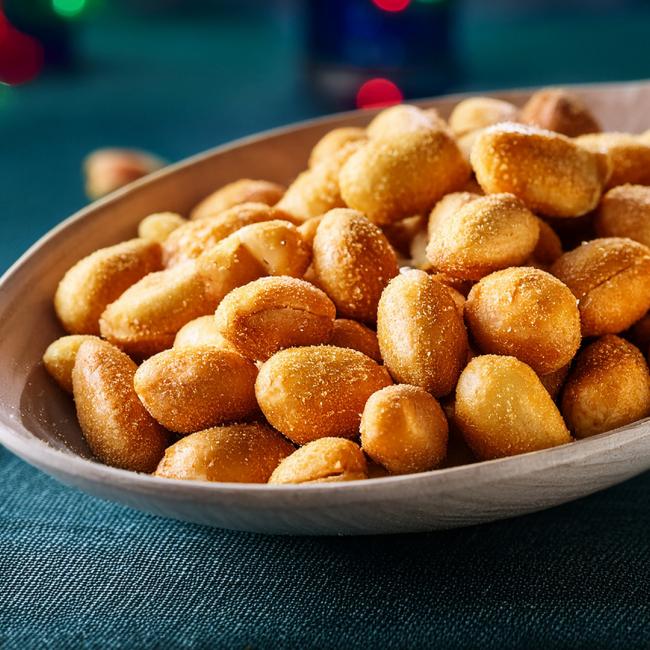In the production of powder mixtures, there are a number of key questions that process engineers regularly face:
- How can the quality of the powder mixture be assessed?
- Using statistical techniques, how can segregation be classified?
- How can homogeneity of the powder mix be estimated?
The experts at Dinnissen Process Technology are available to answer all your questions:
Get in touch with Juul Jenneskens 077 467 3555
How do we determine the quality of a powder mixture
To answer the question of what the quality of a powder mixture is, a good definition will first have to be established. Describing a powder mixture means that various physical properties must be mapped out. All these properties have to be compared with those of the desired composition. First of all, this makes the quality of a powder mixture a versatile concept. Furthermore, some subjectivity arises, because it is arbitrary to what extent the various physical properties must satisfy the desired.
There are many types of powder mixtures with very different physical properties. As a result, there is no universal definition of homogeneity for powder mixtures. It should further be noted that it is not possible to use a single analytical technique for measuring homogeneity.
When answering the above questions, the method of use of the end product must also be taken into account. When a sugar-cocoa mixture is mixed with milk to make hot chocolate, the mixing is not important; if the same sugar-cocoa mixture is used to garnish a pastry, the mixing is indeed important. Another example that is even more clear is the distribution of ingredients in baby milk powder. A pack of baby milk powder generally contains milk powder for several bottles. It is completely undesirable for the first bottle to contain different ingredients than the last bottle. It is therefore important here that the ingredients are homogeneously distributed in the packaging.
The above is now explained with three examples:
As a first example, we consider the quality of a bag of spiced cocktail nuts. The end user naturally pays particular attention to the taste. Normally, a consumer picks up a handful of nuts and then brings them to his mouth one by one. It is desirable that each shot nut contains approximately the same amount of spices in order to impart the same flavor to the shot nut. However, there is no way to guarantee that each shot nut in the bag contains the same amount of herbs. Because some of the herbs can stick to the hands of the user, the amount of herbs can vary per drink nut. The only thing that can be guaranteed per bag of cocktail nuts is that there is a fixed cocktail boat-spice ratio.
A second example concerns an animal feed mixture that has to be deposited from a larger package with the aid of a dosing container into a feeding trough of a pet. It cannot be guaranteed per dosing container that the ratio of all ingredients of the feed is the same at all times. Again, this can be guaranteed for the entire packaging.
Finally, as a third example a medicine in the form of a pill can be mentioned. For pharmaceutical applications, the amount of ingredients per pill must be accurately guaranteed. It goes without saying that the quantity and ratio of the ingredients are very decisive for the effectiveness of the pill. What is more difficult to guarantee is whether the distribution of the various components of the pill within the pill are uniformly distributed.
In summary, it can be said that the quality of a powder mixture depends on the degree of conformity of the mixture with respect to a self-defined scale. There is no inherently good scale.

Coated peanuts
A good opinion of a powder mixture is only possible if careful consideration has been given in advance to a manageable definition for measuring the quality of the mixture
How is heterogeneity of the powder mixture qualified?
The degree of segregation in a powder mix can most easily be defined from a powder mix in which one of the ingredients can be considered the most important. This could be a flavoring in a spice mix or a specific vitamin in compound feed.
Suppose the powder mixture is divided into N samples that are all equal in size and contain exactly the same amount of the major constituent. Based on this assumption, the mixing appears perfect. However, large differences can occur when considering the composition and distribution within the sample. Whether these differences are permissible depends on the definition of degree of accuracy.
With the differences in the composition of the samples, i.e. the intensity of segregation, the heterogeneity of the powder mixture can be qualified. This is done by applying the basic principles of statistics.
Assume that xi is the amount of major constituent in the ith sample. It is very important to define how the quantity is indicated and specified. This can be in mass, volume or numbers.
The average of the main constituent over the different samples can now be calculated with the following formula:
The intensity of segregation can then be calculated by the following formula:
In statistics this is called the variance σ2. The higher the variance, the worse the quality of the powder mixture.
Of course, the standard deviation σ indicates the degree of segregation of a powder mixture just as accurately as the variance, but it is usually not used in practice. More often the coefficient of variation CV is used. This concerns the ratio between the standard deviation and the mean:
In the pharmaceutical industry in particular, the coefficient of variation CV is used as the official standard for powder mixtures. CV has been imposed by various international bodies that regulate the quality of food and medicines in a broad sense.
For the food industry, for example, a CV value of up to 6% is officially tolerated. In the industry that processes and processes powder mixtures, a much smaller CV value is usually used. Normally a maximum of 2%.
The mixing quality can be calculated using the above statistical formulas. When the mixture is completely segregated, the variance can also be calculated with the formula that holds for a binomial distribution:
In practice of most industrial applications, this variance, together with the course of this variance as a function of time, is used as an indicator for the homogeneity and the stability of the process.
How can segregation be classified
In order to gain a better insight into the degree of segregation, an extensive explanation is necessary.
In the example of the bag with spiced cocktail nuts, two different situations can occur:
- Given is an amount of cocktail nuts that are covered with spices, that have just come out of the mixing machine and with which a bag is filled. The amount of herbs may differ slightly per shot nut, but the location in the bag will not show significant differences in the amount of herbs on the shot nut.
- If the bag of nuts has been filled some time ago, a situation may occur that some of the herbs have dropped from the nuts at the top of the bag. As a result, the drink nuts at the bottom of the bag contain more herbs.
With a good mixing process, each drink nut will on average contain the same amount of herbs. In situation 1, the taste sensation of each cocktail nut will be virtually the same. In situation 2, the cocktail nuts from the bottom of the bag produce a clearly more spicy taste.
The scaling of the segregation is often done with the help of the autocorrolation function:
R (r) equals the degree of similarity between various measurement series. In the example of the shot nuts, this value indicates to what extent the amount of herbs per shot nut in a bag corresponds to that of other bags. The calculated R (r) is a value between -1 and 1. The closer the result is to 1, the better the match.
Sampling and estimation of homogeneity of the powder mixture
The degree of segregation becomes more accurate the more samples are included in the calculation. Furthermore, the measurement of the main constituent in all these samples is important. Unfortunately, determining the main constituent normally requires a destructive measurement which is often not applicable in industrial applications. Determining the quality of the mixing of a powder mixture is often only possible by making an estimate using sampling techniques and applying statistical calculations and procedures.
Two important things should not be forgotten here:
The estimate of the number of samples to be taken strongly depends on the quality of the mixture. More samples should be included in the calculations if the powder mixture has a high degree of segregation and is not well mixed. Provided that a significant amount of measurements are included and that it has been clearly defined how a process can be validated, an industrial powder mixture can be evaluated productively.
An indication for the quality of a mixture can be determined by calculating the standard deviation or the coefficient of variation in combination with additional criteria. The procedures to arrive at these indicators can also serve as a standard for certain industries.
A powder mixture can be regarded as homogeneous if the measured concentrations of each main constituent in the samples are equal to each other. Normally, the measurements will take place via derived physical quantities. In practice, destructive methods such as liquid or gas chromatography or atomic absorption spectrometry are often used to determine the main components of the mixture.

Name: Juul Jenneskens
Advisor
Please feel free to contact me if you have any questions about this subject. My team of colleagues and I are ready to answer!
Get in touch with Juul Jenneskens 077 467 3555 [email protected]
Do you prefer to request a consultation directly?
